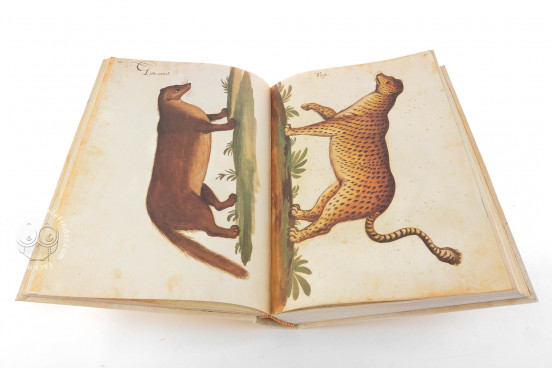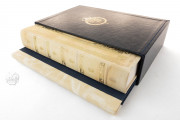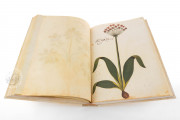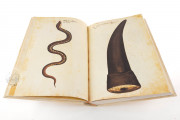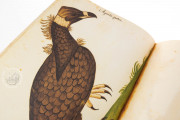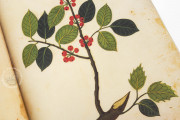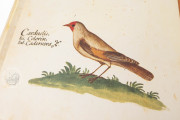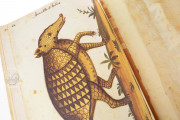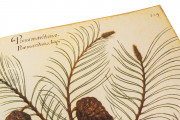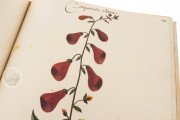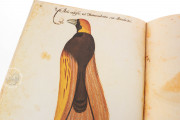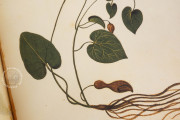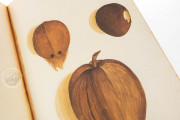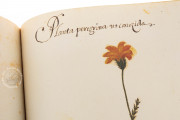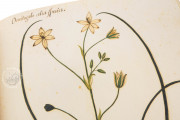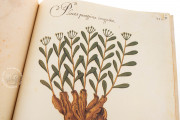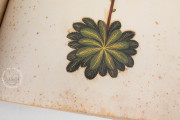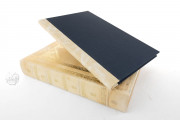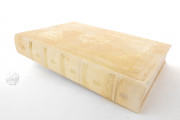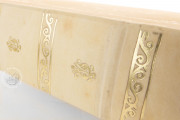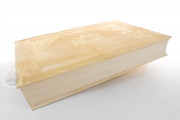The Pomar Codex, also known as the Atlas of Natural History of Philip II, is a manuscript comprising 218 detailed watercolor illustrations of flora and fauna from Europe, Asia, Africa, and the Americas, taxonomically organized by genus and their native habitats. It was created in the last quarter of the sixteenth century for Philip II, King of Spain. Sixty illustrations depict birds, reptiles, and animals; the rest are dedicated to plants and plant parts. The illustrations, generally one per page, are accompanied by their names in Latin and/or Catalan and some in Valencian, Italian, and native American languages.
The book opens with birds and animals, then proceeds to a larger catalog of flora, including plants from the medieval herbal tradition as well as ornamentals. Each leaf of the manuscript has a painting on one side only, with only one exception.
A Gift with a Purpose
Philip gave the manuscript to Jaime Honorato Pomar (d. 1606), the professor of herbs and simple medicines at the University of Valencia, apparently to lure Pomar into his service at his palace at El Escorial. Pomar did, in fact, enter Philip's service in the year of the king's death (1598).
The Art of Science
The paintings are attributed to Italian artists arriving at Philip's court in 1580. They copied live specimens, pressed and dried specimens, and existing paintings and engravings. Following the medieval herbal tradition, the stems, leaves, flowers (when present), and roots of plant specimens are depicted.
New Specimens
Of the seven animals and twenty-five plants native to America, the Pomar Codex may include paintings copied from the now-lost volumes compiled at Philip II's behest in Mexico and brought to Spain by Francisco Hernández (1517-1587) in the 1570s. Most of the images, however, are clearly copied from images rendered in Europe and circulating at the time. For example, the "Armadillo de Indias" relies on an engraving published in Zurich in 1560 (p. 60).
A large number of illustrations of both animals—including all of the quadrupeds—and plants are strikingly similar to designs recorded in Bologna in the circle of the Italian naturalist Ulisse Aldrovandi (1522-1605).
Old Names
The compiler of the Pomar Codex endeavored to assign Latin names to the animals and plants, although it could be a struggle to match specimens indigenous to areas outside the Mediterranean to the Latin names learned from ancient sources.
Beyond Medicine
Although many of the plants chosen for inclusion belong to the medieval herbal tradition based on ancient Greek medicine, there are also ornamental plants new to Europe, including five varieties of tulip—introduced from Asia Minor in the sixteenth century (pp. 207, 208, 213, 215, and 217).
A "Portrait of Nature"
The manuscript's gold-tooled vellum binding proclaims it as both the "royal garden" and a "portrait of nature." Pomar's wife reportedly sold the manuscript after her son's death. Salvador Perellós, Marquis of Dos Aguas, donated the book to the Valencia university library in 1830.
We have 1 facsimile edition of the manuscript "Pomar Codex": "Atlas de Historia Natural" Donado por Felipe II a Jaime Honorato Pomar facsimile edition, published by Vicent Garcia Editores, 1990
Request Info / Price
